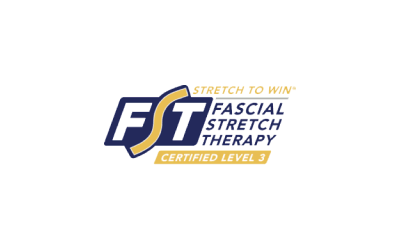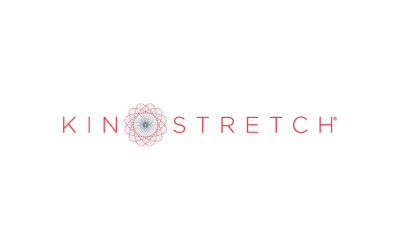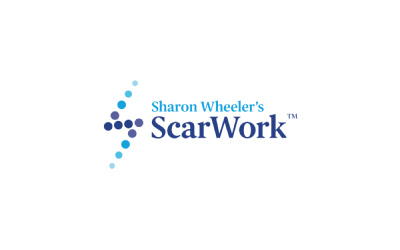Join the conversation.
What is Fascial Stretch Therapy – FST™?

FST™ is not Myofascial Release
Many therapists within the bodywork industry ‘think’ this is what it is, but the two methods are vastly different. Conventional ‘stretching’ (and the myriad of opposing opinions which surround it) should also not be confused with FST™.
Fascial Stretch Therapy™ is an assisted stretching program that has been thoroughly researched and designed by some of the top professionals is the fascia industry, who have worked on applying Thomas Myers’ Anatomy Trains theory in a new and practical way which has resulted in its use across the majority of the American National Football League (NFL) and Canadian Football League (CFL), in addition to many other sporting disciplines and health conditions alike.
People of all ages and abilities can benefit from FST™ – athletes of all levels, fitness enthusiasts and weekend warriors through to those suffering with chronic pain from ailments such Fibromyalgia, Osteoarthritis and Multiple-Sclerosis (MS). Our corporate high-flyers, while benefiting greatly from FST™’s stress-relieving effects, find that it assists in reducing the physical impacts of being “desk-bound”.
You can watch a short video for more information on FST from the founders here.
What is Fascia?
Fascia is a network of layered connective tissue that is present throughout the whole body – from skin and muscle tissue through to joint capsule material – which helps to keep tissues supported and in place, including our organs. Gil Hedley’s “The Fuzz Speech” is a brief and informative way to understand what fascia is.
Fascia is fast becoming a new ‘buzz word’ in the health and fitness industry, yet many still do not completely understand what it is, how important its influence is on our everyday lives and how the after effects of injury, surgical intervention, burns and cuts can affect it – which thus determines our movement capacities years after the event.
In the realm of physiotherapy, osteopathy and chiropractics, fascia should be considered particularly important because of its involvement within muscular and connective tissue structures. Recent research has revealed it is rich in neurotransmitters – therefore creating its own source of ‘pain’ – in addition to serving as a host to many nerves and blood vessels that supply muscles, ligaments and tendons. It also weaves into ligament and joint capsule structures that help to support our joints and bones. When the fascia adheres to its surrounding tissue due to acute or overuse injury, its function becomes limited – and reversing this is a critical part of rehabilitation. Fascial Stretch Therapy™ uses multi-planar and multi-joint stretches that target the fascia in unprecedented ways.
How is it performed?
FST™ is performed on a treatment table in a soothing, private room by a certified Fascial Stretch Therapist. Stabilisation straps are used to hold limbs in place, giving the therapist better control and leverage while they perform the techniques. Our clients have reported feeling comfortable and relaxed, with many drifting into gentle, sleep-like state.
Gentle traction is a key component that allows the therapist to create workspace within the target articulation (joint) for increased Range of Motion. A limb or limbs will then be taken through a targeted movement pattern that will assess the fascia for restrictions which may need to be addressed.
There is no real way to fully describe how the therapy will feel for you personally without actually experiencing it. Your body will be moved and stretched in ways that you just cannot do on your own, and you are likely to feel areas of tension that you did not realise were restricted (or were even there!)
The process is generally pain-free, although you may experience discomfort or intensity in some areas if they are more restricted. The therapist will continually assess and liaise with you, working slowly through these areas to keep discomfort to a minimum.
In any bodywork modality, pain should not be a target or a gauge of effectiveness. By engaging the pain receptors we increase the flight or fight mode, and in doing so we limit the long-term positive effects of that specific treatment. With that said, mild discomfort, if experienced, can and should be embraced as this is where the mechanical change within the target tissues occurs. Any manual therapist should be able to talk you through this concept, whilst managing the fine line between progressive discomfort and regressive pain.
Why do we use it?
For every 10 years we age, we lose approximately 10% of our mobility. Research leads us to understand 49% of this loss comes from our joint capsules alone. Traditional soft tissue therapist cannot typically reach this with their hands, other manual therapies will be limited on full access to the joint construct.
With Deep Tissue and Soft Tissue massage used as the base modality for many years, FST™ provides a 3D toolbox that allows access to areas of the body that traditional soft tissue modalities such as massage, myofascial release, cupping and Instrument Assisted Soft Tissue Mobilisation (IASTM) aren’t able to reach.
Within one session our clients can feel and see immediate results. Typically within a small number of sessions (the number is dependent on the individual) these results will be permanent, unlike other modalities where results tend to only last a few days.
When we couple FST™ with our wider approach, incorporating systems like Functional Range Condition® (FRC®) and RockTape Functional Movement Techniques® (FMT®) – in addition to the education we provide you for your own self-management, thus lessening your reliance on us – the rewarding results will be like nothing else you have experienced.




